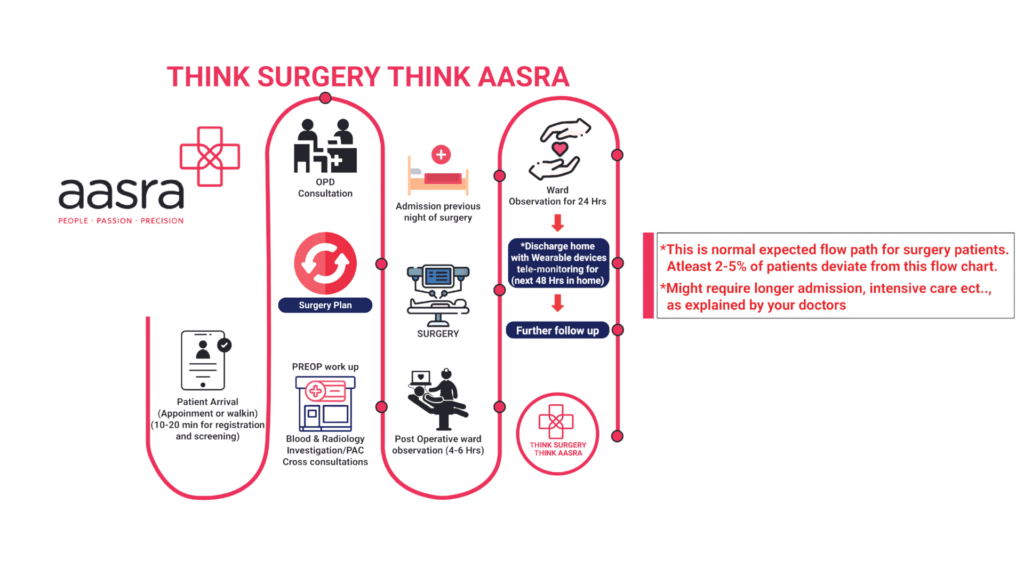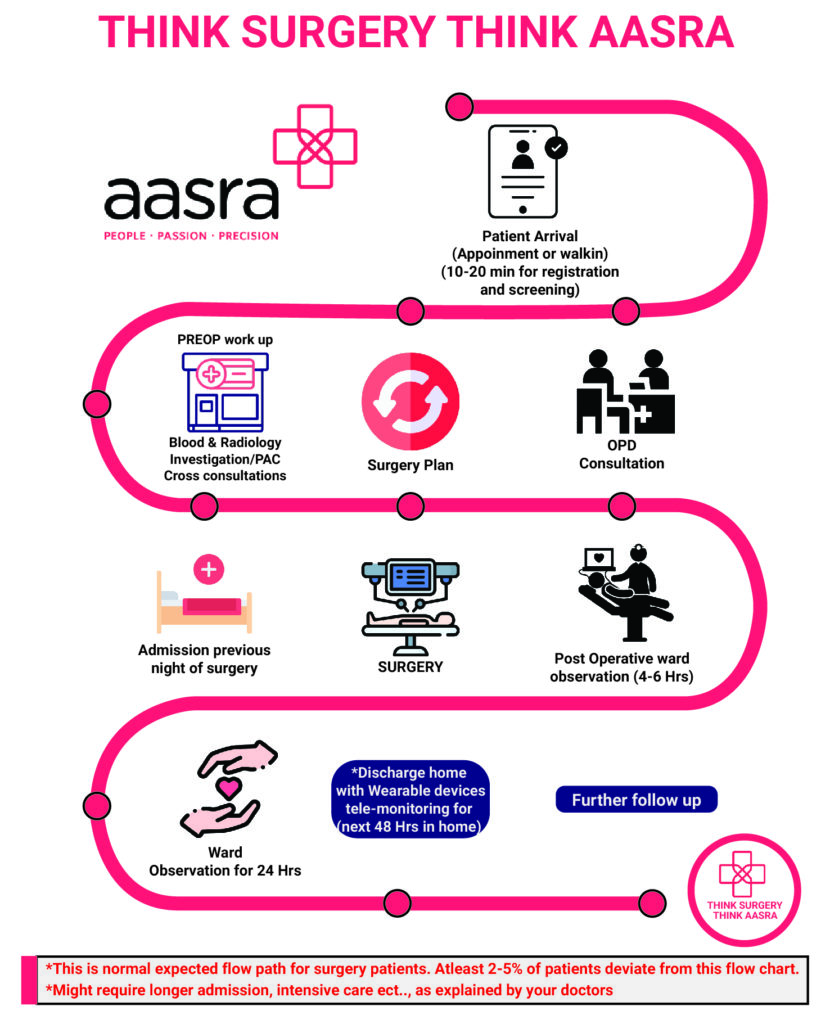One kind of surgery is a myomectomy using robotic assistance. It is carried out to remove fibroids, which are growths in a woman's uterus. Special tools are used to do the procedure.
A woman's lower belly houses her uterus, a reproductive organ (abdomen). Throughout pregnancy, the uterus houses the growing foetus. Sometimes, cells from the uterus' internal walls proliferate and develop into tumours known as fibroids (also called leiomyomas or myomas). Almost never are fibroids cancer (benign). They come in varied sizes, from tiny to grapefruit-sized. Fibroids are quite prevalent. Until menopause, the risk of fibroids rises with age.
Fibroids can develop on the uterine wall, inside the uterine cavity, or protrude into the interior of the uterus. In the uterus, fibroids can develop in one or many locations at once. Typically, fibroids are not cancer. However, issues still arise from them. After that, they are removed surgically.
One procedure to remove fibroids is a robotic-assisted myomectomy. This indicates that fewer incisions are made than during a typical surgery. It is carried out under general anaesthesia while you are unconscious.
Through tiny incisions on your lower belly, your surgeon will insert small instruments and a tiny camera during the procedure. This improves the doctor's ability to see the area of your body. The tools are moved by your doctor using a robotic controller. This enables your provider to manipulate the tools in incredibly small motions. Your uterus had fibroids removed by the doctor. Then the tools are taken away. The wounds are stitched up and bandaged.
The use of robotics during myomectomy provides several advantages over other procedures. For certain persons, the risk of problems may be lower. It might result in a quicker recovery and shorter hospital stay. Additionally, fibroids that are challenging to remove using another technique could be removed during surgery.
A robotic-assisted myomectomy is a surgical procedure that is used to remove uterine fibroids. Uterine fibroids are noncancerous growths that can develop in the uterus and cause a variety of symptoms, including heavy menstrual bleeding, abdominal pain, and frequent urination. In some cases, these fibroids can be large or numerous enough to interfere with a woman's ability to become pregnant. A robotic-assisted myomectomy can be an effective way to remove these fibroids and restore fertility.
Your healthcare professional could suggest other therapies if you just have minor symptoms. These might include taking painkillers or using hormones.
In a myomectomy, only the fibroids are removed. The uterus is not removed. Because of this, it becomes a better choice for women who wish to have kids.
As with any surgical procedure, there are potential risks associated with a robotic-assisted myomectomy. Some possible complications of the surgery may include infection, heavy bleeding, and damage to the bladder or other organs. In rare cases, the surgery may cause scarring of the uterus, which can lead to future complications with pregnancy. It is important to discuss the potential risks of the surgery with your doctor before undergoing the procedure.
How to be ready for your surgery should be discussed with your doctor.
- Inform your healthcare practitioner of all the medications you use. This applies to all prescription drugs as well as over-the-counter medications like aspirin. Herbs, vitamins, and other supplements are also included. Before the procedure, you might need to stop taking some medications, such as blood thinners.
- You must give up smoking before surgery if you do. Healing may be delayed by smoking. If you need assistance quitting smoking, speak with your doctor.
- After midnight on the night before your procedure, avoid eating or drinking.
- Any recent changes in your health, such as a fever, should be discussed with your doctor.
Before your surgery, you might need to have tests such as:
- Electrocardiogram: Your heart rhythm is being checked.
- Ultrasound: To view your fibroids and to make an image of your pelvis, this is done.
- MRI: This provides more thorough details on your fibroids.
- Blood test: These examine kidney function and test for infections, anaemia, and anaemia.
You might receive additional preparation advice from your healthcare provider.
The specifics of your procedure can be explained by your doctor. Your procedure will be carried out by an ob-gyn (obstetrician/gynaecologist) surgeon and a group of skilled nurses. You may typically anticipate the following:
- Anaesthesia will be administered to you. You won't feel any discomfort as a result, and the procedure will go more smoothly.
- Throughout the procedure, a medical professional will keep a close eye on your vital signs, such as your blood pressure and heart rate.
- Before and after the procedure, you can receive antibiotics. Infection is being aided by doing this.
- Your abdomen will receive a few little incisions from the doctor.
- Abdomen is distended by gas facilitate surgery.
- Your doctor will manipulate the tools and remove the fibroids using the robotic controller.
- The surgical instruments will be taken out after the procedure. The wounds will be stitched up and bandaged.
Your vital indicators will be monitored following the procedure. You might be able to return home that day. Or perhaps you'll have to spend the night in the hospital. You'll need a driver to take you home when you're ready.
After the operation, you can have some soreness. As required, you can take pain medication. As soon as you're able to, you can start eating normally again.
Moving around as soon as you can following surgery can aid in avoiding complications like blood clots. After surgery, you might need to engage in breathing exercises to help your lungs expand.
For several days, you can experience shoulder ache. The gas injected into your abdomen during surgery is to blame for this. Additionally, the wounds may be oozing some fluid. If there is a lot of fluid, if it is bloody, or if the incisions are red or heated, let your doctor know. If any of the following apply to you:
- Fever
- Extreme menstrual bleeding
- Extreme pain
- Difficulty breathing
Observe all of your healthcare provider's recommendations for medication and wound care. As directed, restrict your movement and sexual activity. At a later session, the stitches might need to be removed. Attend all of your follow-up appointments without fail.
After surgery, your fibroid symptoms can completely go away. Fibroids are regenerative. In case your problems recur, consult your doctor.
If you become pregnant after having fibroids surgically removed, consult your doctor. For the majority of women who have had myomectomy, a caesarean delivery may be necessary to assist avoid problems.















